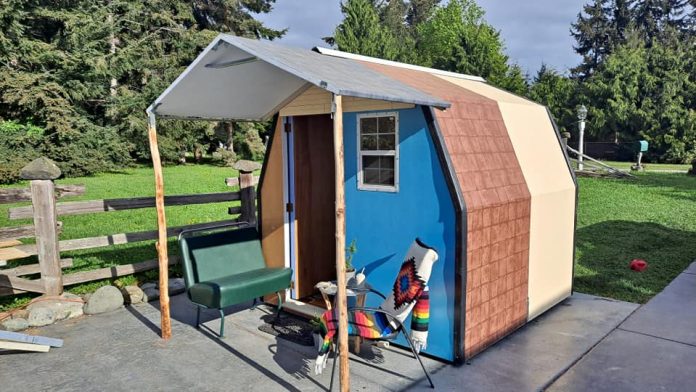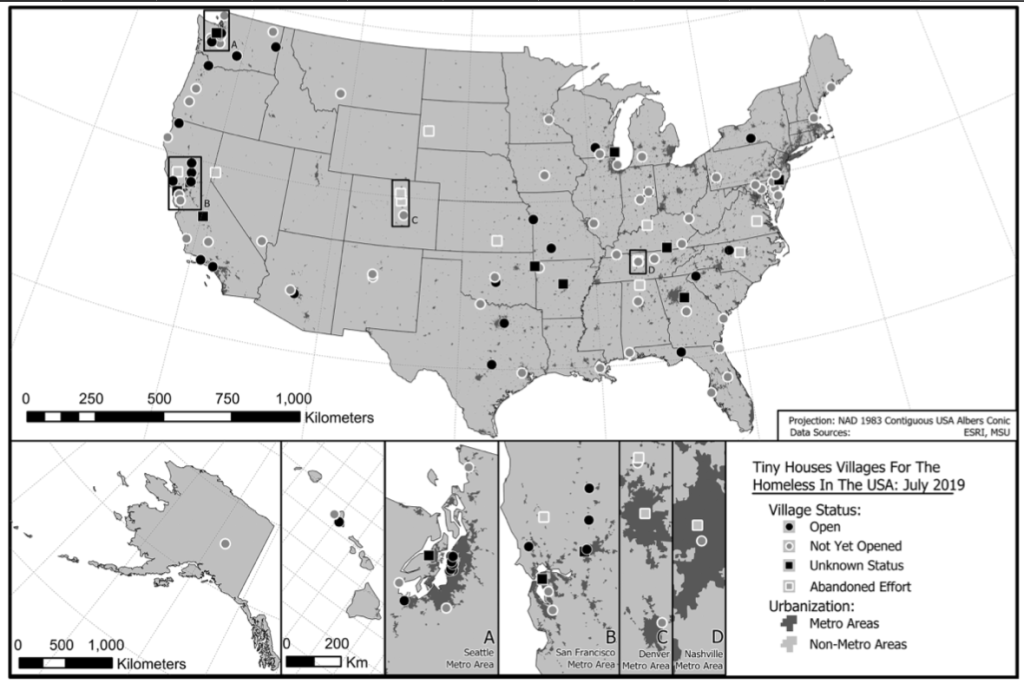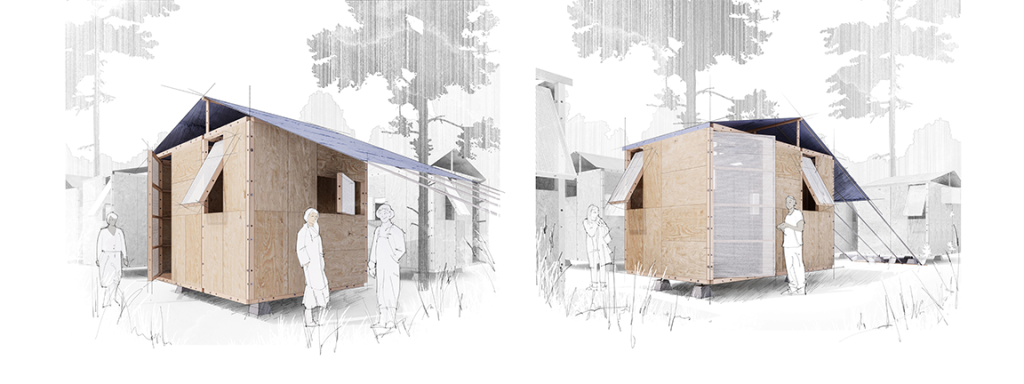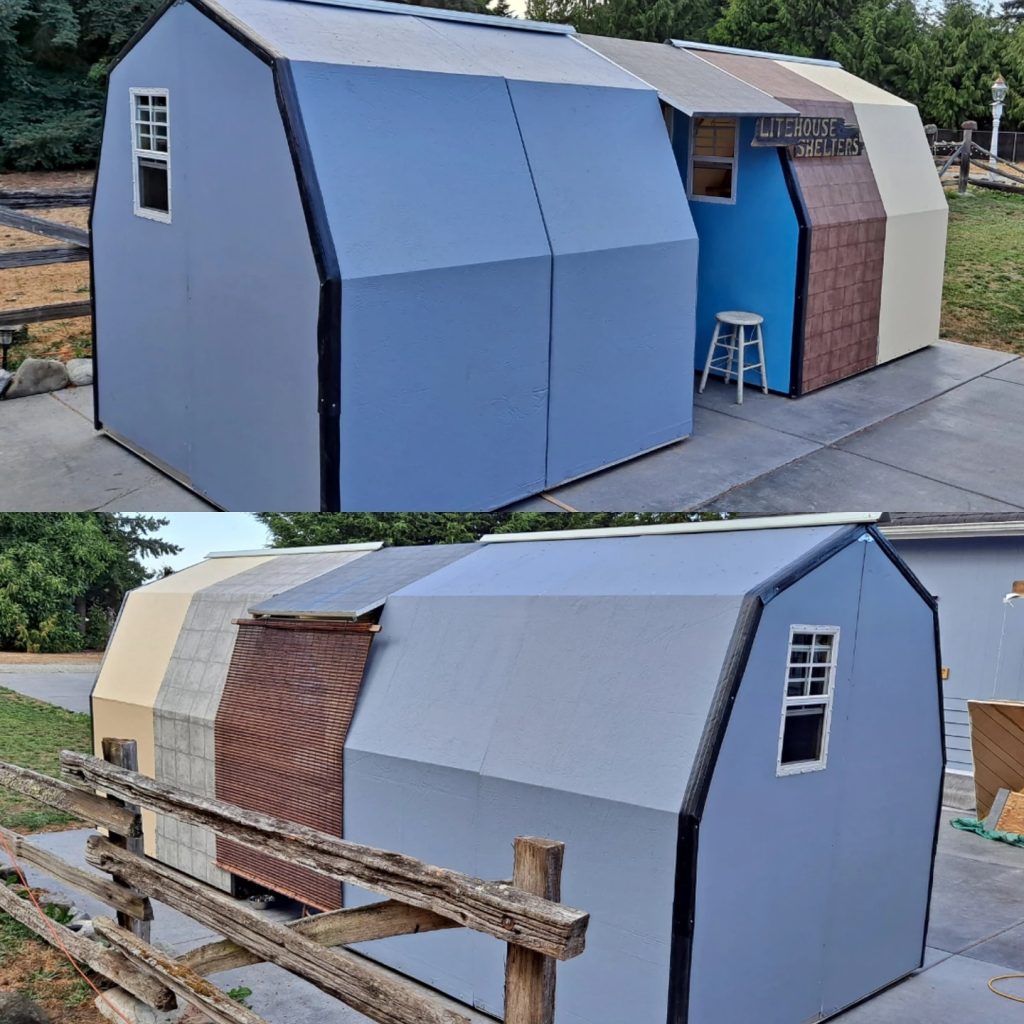
As the homelessness crisis deepens its impact across the U.S., Washington State designers are improving tiny house designs with the goal of bringing more people into shelter.
The first time I stepped into a tiny house constructed for emergency shelter, I was struck by how thin the plywood walls were. And yet, those walls and the roof above them offered so much more protection from the rain and wind than a tent would. While admittedly imperfect, for individuals and families experiencing homelessness, life in a tiny house village provides a level of security and stability they may not have known for years or, in some cases, decades. As tiny house villages continue to be scaled up as an emergency housing solution in Seattle and elsewhere in the U.S., designers are tackling the question of how these tiny dwellings can be rethought to better serve their intended purpose.

To this end, two new tiny house design prototypes will be unveiled this weekend at the 2021 Seattle Design Festival, one by architecture firm Olson Kundig in partnership with Camp United We Stand, and a second created by Litehouse Shelters, a tiny house contractor based out of Sequim, WA.
Homebase: an ultra affordable and portable tiny house by architecture firm Olson Kundig

Camp United We Stand is a nonprofit whose mission is to provide safe shelter for homeless individuals and families in Shoreline and North Seattle. The organization relies on partnerships with churches who provide land for their sanctioned encampments, similar to the Low Income Housing Institute (LIHI) who oversees tiny house villages in Seattle. However, unlike LIHI, which receives public funding and is a major affordable housing developer in addition to its work operating tiny house villages, Camp United We Stand survives solely on private donations. Residents currently live in tents, but the organization would like to transition to a tiny house village model so they can live with greater comfort and security.
However, the financial cost of such a transition presents a major barrier for Camp United We Stand. According to estimates from LIHI, materials to construct an 8X12 foot tiny house normally cost about $2,500, however, the price tag has surged up to $4,500 due to a spike in lumber costs. (Like most tiny house village operators, LIHI relies on volunteers for construction, so labor is not factored into the price.)
Yet, when Camp United We Stand reviewed their budget, leadership came to the conclusion that they would need to spend far less, $1,000 per tiny house, maximum. There was another complication, too — portability. While it is possible to move LIHI’s tiny houses, relocating them is no small effort, as was demonstrated when Union Village in the Central District was forced to move after its four year lease expired. During the relocation, each tiny house had to be moved individually by truck, a tedious process. However, a four year lease would be practically an eternity for Camp United We Stand, which moves to a new location every 3-6 months. As a result, the organization informed Olson Kundig that it was vital that any tiny houses be designed for quick assembly and disassembly, as well as durable enough to withstand frequent moves.
The tiny house prototype shared with the public at the Seattle Design Festival is intended for use by individuals, but a larger design for couples and families is also in the works. Once Olson Kundig’s prototypes are finalized they will be used to create approximately 30 tiny houses for Camp United We Stand’s village.
Litehouse Shelters: Insulated, modular, and easy to assemble structures for use as tiny houses and more.

Inspiration for Brad Griffith’s design for Litehouse Shelters came from a World War II era plane called the “Mosquito.” Engineered out of wood by the British using nothing more than masterful carpentry skills, the Mosquito was light weight and faster than any plane created by Nazi Germany. As a homebuilder and contractor with a passion for carpentry, Griffith wanted to see if he could similarly apply his wood working skills to address another significant challenge — the housing affordability crisis.
Griffith’s efforts resulted in the creation of a tiny house using structural insulated panels (SIPs) and a wooden frame that uses his own signature wood bending technique. SIPs have been gaining in prominence in recent years due to their strong energy performance, design flexibility, and quick construction time, all of which Griffith believes can be used to advance tiny house design. His tiny house prototype using SIPs is making its debut at the 2021 Seattle Design Festival at an exhibit that will also feature some of his other woodworking creations.
The wall frame shape was designed with the intention that it be adapted for many different purposes, and, according to Griffith, the SIPs themselves are lightweight, possible to transport in a standard-sized cargo van, and easy to assemble using common power tools. In the future, Griffith envisions the SIPs and frames being used to construct an entire village for people struggling with housing insecurity — one that could include a dining hall, consulting offices, family-sized dwellings and more.
In terms of cost, Litehouse Shelters are comparable to prefabricated emergency shelter options, like those designed by Everett-based Pallet. A 64 square foot (8’X8′) shelter designed by Pallet costs about $6,900; Litehouse Shelters estimates that the same sized shelter would cost $6,000 using their materials, and additional 4 foot sections with floor panels and side walls would cost $1,800 each. An entire 192 square foot (8’X24′) family-sized tiny house could be constructed for $13,200.
Because it relies on common construction materials and tools, Griffith believes his prototype is very scalable and adaptable for many different uses.
Interested to experience these tiny houses first hand and learn more about their designs? Come out to the 2021 Seattle Design Festival at Lake Union Park, August 21-22nd, 10am-7pm.
Natalie Bicknell Argerious (she/her) is a reporter and podcast host at The Urbanist. She previously served as managing editor. A passionate urban explorer since childhood, she loves learning how to make cities more inclusive, vibrant, and environmentally resilient. You can often find her wandering around Seattle's Central District and Capitol Hill with her dogs and cat. Email her at natalie [at] theurbanist [dot] org.


